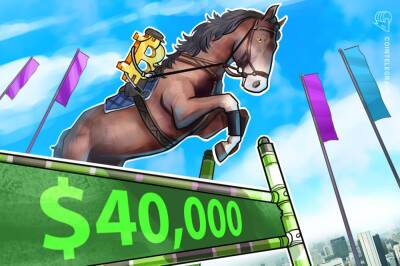Altcoin Roundup: Interoperability push puts attention back on Polkadot
The Polkadot ecosystem sorely underperformed compared to other layer-1 networks in 2021, while the slow roll-out of parachain auctions and mainnet launches left the network playing catch-up in 2021.
It appears that this trend came to an end in mid-March when numerous projects in the Polkadot ecosystem saw their prices climb higher after users began to engage with networks that expanded their offerings and made a push toward Ethereum Virtual Machine (EVM) compatibility.
Here’s a look at six top moving protocols in the Polkadot ecosystem that are helping to establish a presence in the cryptocurrency market.
Interoperability has been one of the driving themes of the cryptocurrency market for the past year, and Moonbeam (GMLR) and Astar (ASTR) are two Polkadot parachains focused on bringing multichain compatibility with Ethereum other networks.
Moonbeam is a smart contract parachain aiming to make it easier to use Ethereum developer tools to build or redeploy Solidity projects in Polkadot’s substrate-based environment.
It was the first parachain to go live on the Polkadot mainnet and plans to bring on-chain governance, staking and cross-chain integration to the base Ethereum feature set.
Astar is a decentralized application (DApp) hub that supports a variety of standards including Ethereum, WebAssembly (WASM) and layer-2 solutions like zk-Rollups. The goal of the protocol is to become a multichain smart contract platform capable of supporting multiple blockchain networks and virtual machines.
Since its launch in late January, the Astar network has seen the total value locked on the protocol hit a high of $1.47 billion, and the metric currently sits at $1.31 billion, according to data from DefiLlama.
Moonbeam and Astar provide
Read more on cointelegraph.com














![Can Litecoin [LTC] recover on the back of demand amid strong headwinds - ambcrypto.com - city Santiment](https://finance-news.co/storage/thumbs_400/img/2022/4/11/21244_wn1.jpg)





